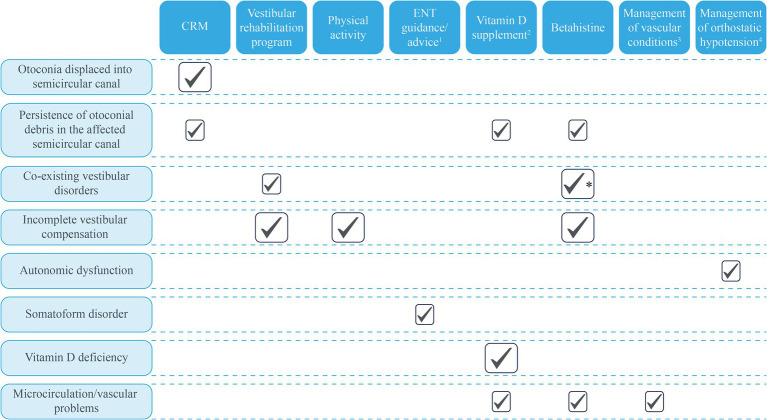Figure 3.
Potential treatment approaches based on known and proposed mechanisms of BPPV. Large ticks represent the mechanisms supported by clinical evidence; small boxes represent potential benefits based on mechanisms with evidence from animal studies or proposed mechanisms. 1Explanations and advice from the ENT specialist about what to expect during CRM and the expected trajectory for symptom resolution post-CRM may benefit anxious/stressed patients. 2Only for patients with diagnosed vitamin D insufficiency. 3Conditions that may affect the microcirculations, such as hypertension and dyslipidemia. 4Patients with orthostatic hypotension, vascular risk factors associated with microcirculatory effects, and brain atrophy may be at greater risk of BPPV. *Betahistine is recommended for use in patients with Ménière’s disease. BPPV, Benign paroxysmal positional vertigo; CRM, Canalith repositioning maneuver; and ENT, Ear, nose, and throat.

